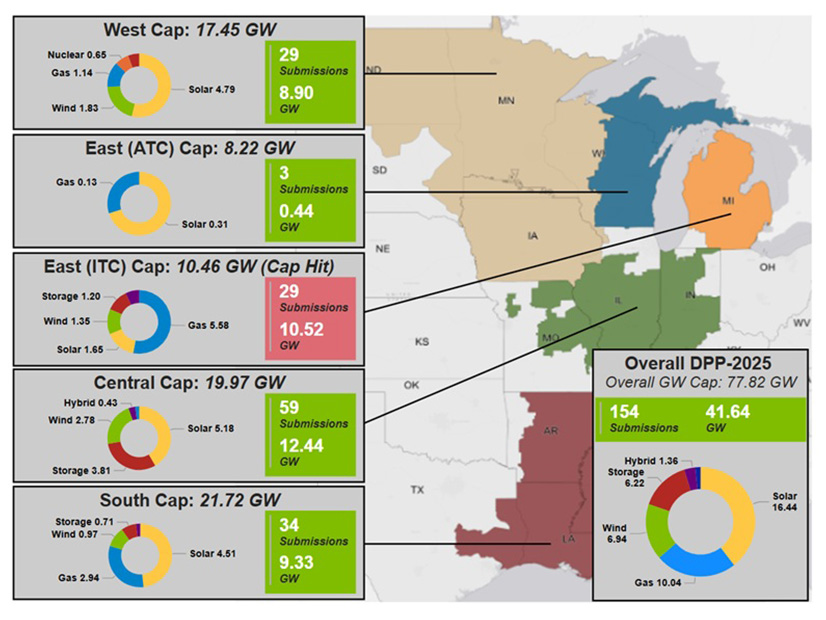In the rapidly evolving landscape of automation and artificial intelligence, businesses face an array of choices when it comes to selecting tools that optimize operations and enhance productivity. The recent introduction of MISO’s SUGAR automation software represents a pivotal shift in how power flow simulations are conducted, particularly for generation projects within complex energy markets. This innovation not only underscores the importance of technology in operational efficiency but also provides a comparative lens through which to evaluate existing tools in the market, such as Make and Zapier for automation, and OpenAI versus Anthropic for generative AI solutions.
At the heart of the discussion surrounding MISO’s SUGAR automation software lies its comparative effectiveness against previous methods for identifying network upgrades in power generation projects. Traditional power flow simulations, while thorough, often presented significant time and resource burdens. With SUGAR, MISO has managed to streamline this process, enhancing speed without sacrificing the accuracy essential for operational decision-making. This presents a compelling argument for businesses to consider their own operational frameworks: the cost and time savings associated with automation tools can dramatically impact overall ROI.
When determining the strengths and weaknesses of automation platforms like Make and Zapier, one must consider several factors, including ease of use, integration capabilities, pricing structures, and scalability. Make is lauded for its intuitive visual interface that appeals to non-technical users, thereby democratizing automation within organizations. Conversely, Zapier excels with its vast ecosystem of integrations, making it a versatile choice for businesses looking to connect disparate tools and streamline workflows. However, users may find challenges with Zapier’s pricing tiers, which escalate rapidly with an increase in task volume, potentially making it prohibitive for small and medium-sized businesses (SMBs) with tighter budgets.
The scalability of these automation solutions also warrants careful consideration. While both platforms cater to varying business sizes, the transition from small-scale to enterprise-grade operations can be fraught with challenges. For SMB leaders, this means not only evaluating current needs but also anticipating future growth. In this regard, Make’s flexibility in accommodating diverse workflows may provide a competitive edge. On the other hand, Zapier’s extensive library of pre-built templates offers immediate solutions that can quickly facilitate operational enhancements, but organizations must remain vigilant about potential hidden costs as their needs mature.
The comparison extends beyond automation platforms into the realm of AI, specifically OpenAI and Anthropic. OpenAI’s offerings are known for their robust generative capabilities, including natural language processing and image generation, with a focus on extensive dataset training. This allows businesses to deploy complex AI-driven applications that can enhance customer interactions, optimize marketing campaigns, and even assist in product development. In contrast, Anthropic positions itself as a more ethical alternative, emphasizing safety and reliability in its AI models. Both platforms offer compelling propositions; however, they diverge significantly in terms of operational philosophy and user application.
The cost implications of employing these AI tools can significantly affect an organization’s bottom line. OpenAI’s pricing structure may present a hurdle for some SMBs, particularly those early in their AI journey, while Anthropic might appeal to businesses prioritizing ethical AI deployment, albeit often at a premium for perceived reliability. Ultimately, leaders in SMBs must weigh the benefits of advanced capabilities against their operational budgets and ethical considerations, recognizing that each platform offers distinct trade-offs in value.
In terms of ROI, the successful implementation of automation and AI tools hinges on strategic alignment with business objectives. For instance, leveraging SUGAR software could result in substantial savings in labor costs and time, thereby enhancing project delivery timelines and customer satisfaction in the energy sector. Facilitation of faster, data-driven decision-making stands to transform operational paradigms, potentially leading to a ripple effect across the organization in terms of performance metrics. As such, a rigorous analysis of expected outcomes should underpin any investment in automation or AI technology.
In conclusion, SMB leaders and automation specialists must transition from a reactive to a proactive approach, evaluating not just the technological features of automation and AI tools, but also how these platforms align with their broader strategic objectives. By carefully comparing tools such as Make and Zapier alongside OpenAI and Anthropic, organizations can better identify platforms that fit their unique needs, ensuring that they leverage technology to create sustainable competitive advantages. Transformational benefits can only be realized when technology is integrated seamlessly into the organizational fabric, assisting in scalability, driving economic efficiencies, and enabling innovative growth.
FlowMind AI Insight: The adoption of advanced automation and AI technologies is not merely a matter of choice; it is a strategic decision that can fundamentally shape the trajectory of businesses. Organizations that position themselves at the intersection of operational efficiency and technological adoption will not only enhance their current capabilities but also future-proof themselves against emerging market challenges.
Original article: Read here
2025-04-23 07:00:00

